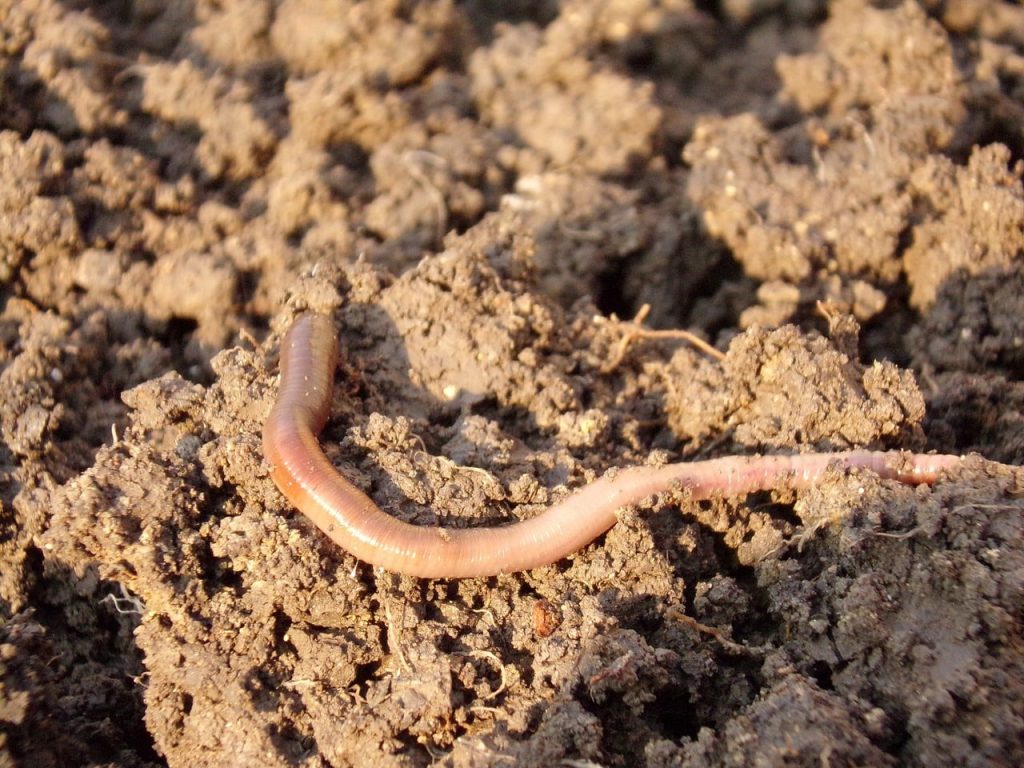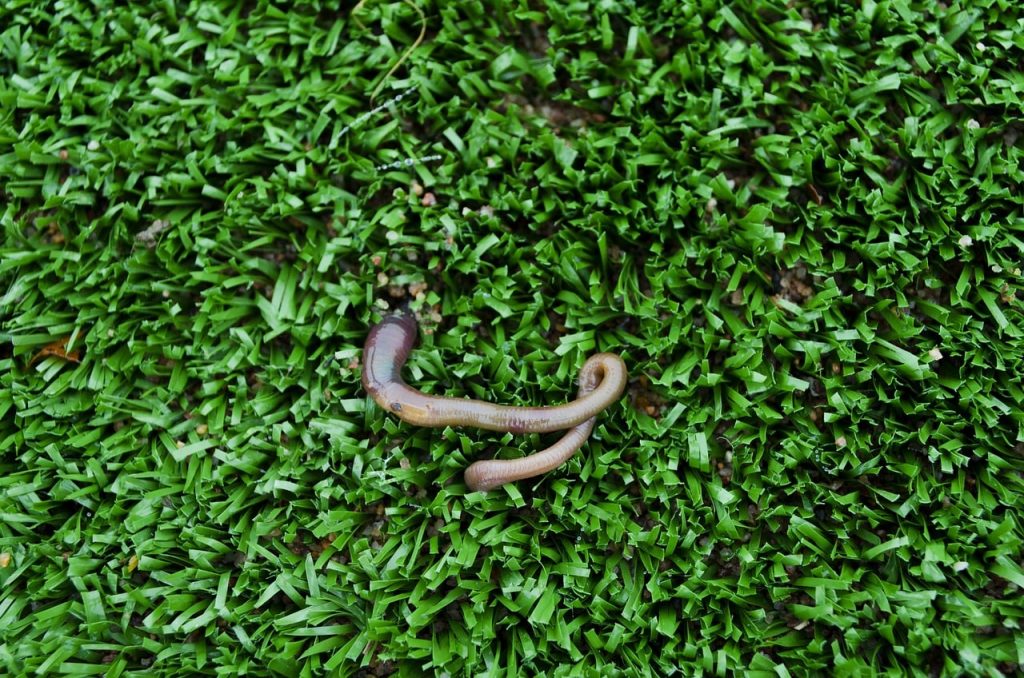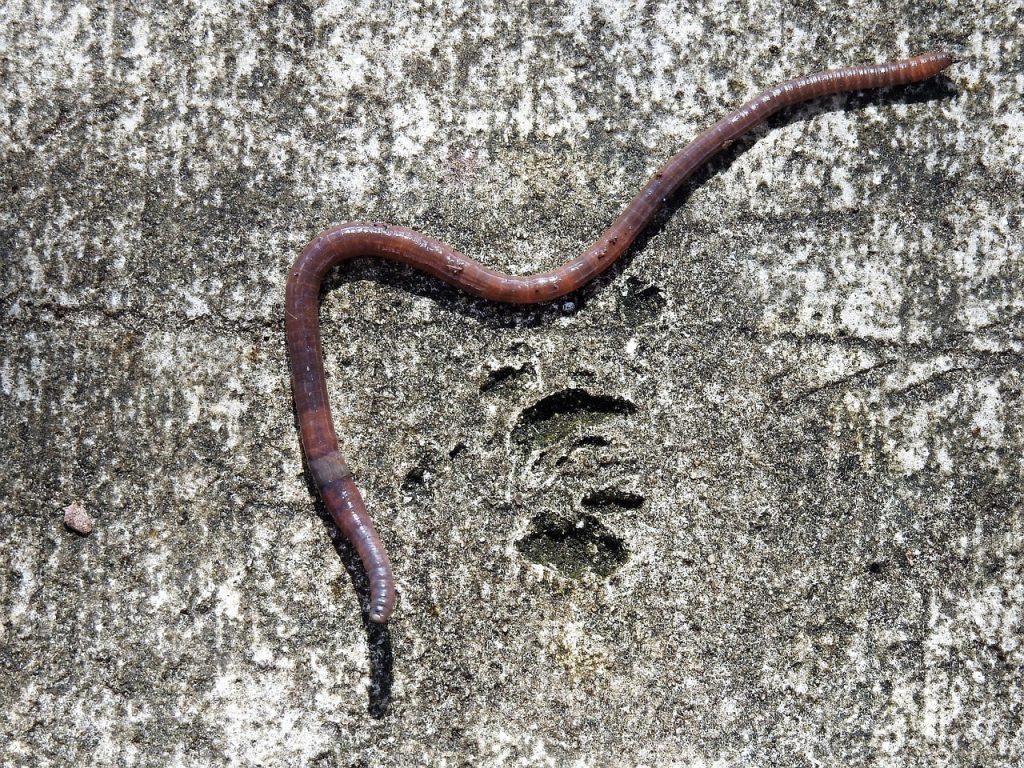The life of lawn worms, like themselves, is practically invisible to us as long as they are underground. This happens most often while the bright sun is shining. And only during the rain, do these creatures rush to the surface. The truth is not at all because they rejoice in life-giving moisture.
On the contrary, they run from water, which penetrates in abundance into the soil, blocking the access of air there, which interferes with their breathing. And it seems to us that they, crawling out of the ground, seem to appear out of nowhere because of the rain. That is why such lawn worms received the appropriate nickname among the people – rain.
When it rains, the lawn worms crawl out because it becomes difficult to breathe underground
The entire flora of the planet could hardly exist and flourish luxuriously without these unpretentious creatures. Performing at first glance a work that is completely unbearable for such insignificant small organisms, from year to year they tirelessly loosen the soil where they live and move, breaking through long passages.
Crawling out to the surface at night and raising the valuable decayed organic matter on their bodies from the depths, simultaneously feeding on it and defecating fertile particles, they contribute to the formation of the vegetative layer of the world space.
And they have been doing this since time immemorial prehistoric times, changing the environment and ecology for the better.
Table of Contents
- 1 Psoas Lumbricides Lawn Worms
- 2 Lumbricus Terrestris Lawn Worms
- 3 Dung Lawn Worm – Eisenia fetida
- 4 Reddish Puffball (Lumbricus rubellus)
- 5 Ironstone (Aporrectodea dubiosa)
- 6 Aporrectoda Handlirschi (Aporrectodea handlirschi)
- 7 Eisenia
- 8 California Red Worm (Artificially bred from Lumbricus rubellus)
- 9 Australian megascolides (Megascolides australis)
- 10 Andiorrhinus
- 11 Hammerworm (Bipalium)
Psoas Lumbricides Lawn Worms
We will begin our story about lawn worms with those of them that are commonly referred to as the Real family (the Latin name is Lumbricides). They are well-known to us. They are actively used by anglers for bait, and gardeners as a “huge living shovel”, because, unlike all devices, lawn worms loosen the soil to almost a meter depth.
This also contributes to the flow of air into it and the life-giving breath of the roots of plants that are indispensable to us.
The name of this family from Latin should be translated as “lumbar muscles”. And it is not at all difficult to understand: why these lawn worms are given such a nickname. How could it be otherwise, if the simple body of these invertebrates ends on one side with an eyeless front with a mouth, and on the other with a tail; and everything else can easily be called one big loin, completely permeated with various types of muscles: annular and longitudinal. The first of them, when contracted, lengthen, and the second – shorten the body. And without this, the movement of such animals is impossible.
That is, muscles are of great importance for such primitive creatures, playing the role of organs of movement. After all, they do not even have legs, as well as anything resembling limbs; only the ventral bristles with which they hold onto uneven ground to push their body forward as they move.

When making a jerk, the lawn worm first lengthens and becomes very thin; then it is hooked in front and pulled up, becoming thick and short, thus traveling through the underworld. Any kind of movement of the earthworm is performed due to muscle contractions and subsequent relaxation. Next, we will get acquainted with some of the varieties of “lumbar muscles.”
In structure and appearance, most lawn worms are similar to each other.
Lumbricus Terrestris Lawn Worms
In our area, the most common, well-known, and familiar of the types of lawn worms that appear after rain is the one whose representatives are considered to be and called “ordinary”.
The body of specimens from this species (about 12-30 cm long on average) has an annular structure, that is, it consists of ring segments, the number of which can be in the hundreds.

The head of such creatures is easily distinguished from the tail since the front region has a brighter purple-red hue.
The original homeland of these lawn worms, like many lumbricides, should be considered Europe. However, today they can be found in any of the corners of the planet acceptable for existence.
Only not everywhere the presence of such “settlers” is considered desirable by fans of the local fauna. It’s just that this specie is replacing the original varieties of lawn worms, making them a problematic competition. Interestingly, the mating of such creatures can last for hours and occur up to 17 times in a row.
Dung Lawn Worm – Eisenia fetida
The Latin name of this variety reflects the very essence and means “bad smelling”. We called these lawn worms simply – “dung”, which clearly indicates their usual habitat. There are also many of these primitive creatures in compost pits and among rotting plants.
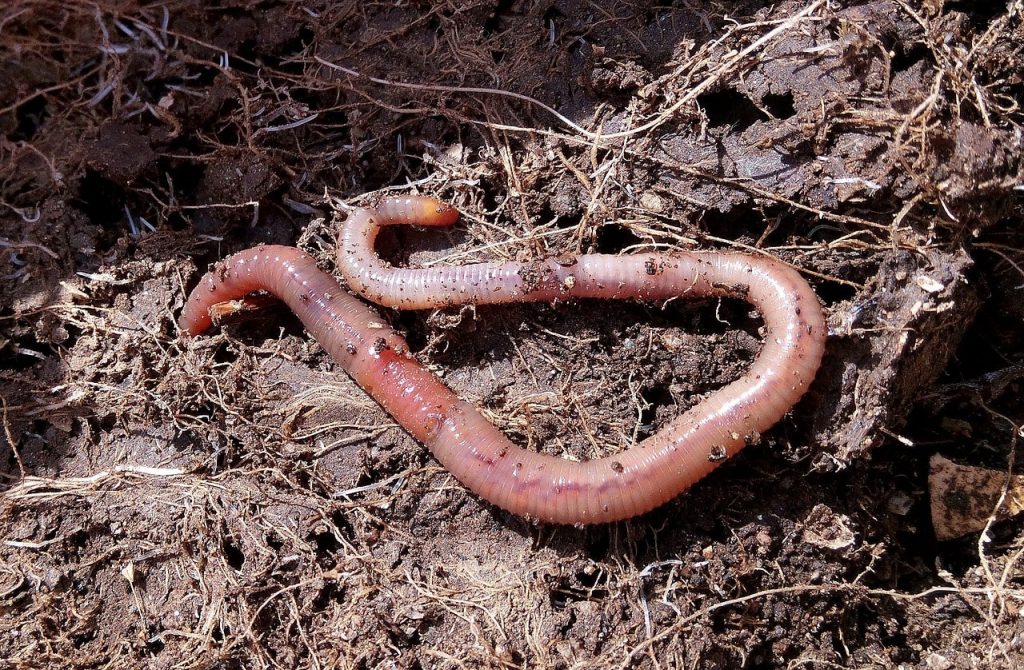
Usually, they do not go deep into the soil, as they are not able to make full-fledged passages in the ground.
Unlike other common species, representatives of this species are short (their body usually does not exceed 10 cm). But their skin is very thick, and they look well-fed.
In color, they can be striped or plain. By behavior, they are very active, and in case of danger, they react vividly to circumstances and try to slip away. The yellow liquid that comes out when pressing on their bodies is quite disgusting.
As for reproduction: they do not breed alone, although they are, like their relatives, hermaphrodites. They need a couple. In fact, they are not asexual, quite the contrary: they are rewarded with male and female opportunities.
And they usually mate at night, connecting through a special belt – outwardly this is a seal in the front of the long body of the lawn worm, clearly visible and consisting of several fused segments. Weeks after copulation, a cocoon emerges from this special organ, and young organisms are already emerging from the latter.
If you break the unfortunate defenseless lawn worm strictly in half, then the front part with the girdle can still recover and continue to exist, while the tail part will die.
This happens in most species, but not in all. In some tenacious species, including the dung lawn worm, regeneration from the tail is possible.
That is, it turns out, as with the simplest, from one organism two whole organisms can turn out. Not to mention the smaller losses: all the missing parts will soon grow back. But this is not the end of the secrets of the “bad smelling”.
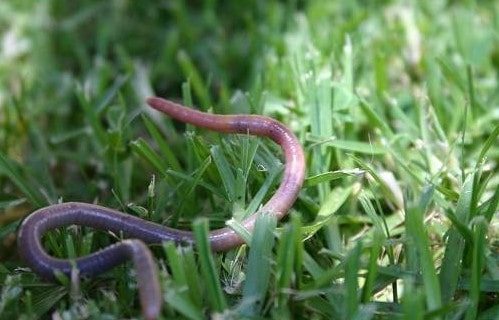
The fertility of these lawn worms people have learned to use to great advantage. Such organisms are specially grown artificially, and livestock and poultry are fed with their biomass. Plus, these lawn worms are used to make special fertilizers – Biohumus.
Dung-bearing, the lawn worm is named because of its choice of habitat
Reddish Puffball (Lumbricus rubellus)
The violet-red body of such creatures, having an average width of about 5 mm, is usually not built from more than a hundred segments. And from the 26th to the 32nd of them, if counted from the front end, a thick and dense pinkish-red belt (clitellum) stands out noticeably.
Reddish raincoats usually stay by wandering through the subsoil, closer to the surface of the earth, without going much into the depths. But if necessary, unlike dung lawn worms, they are quite capable of doing this, for example, in a drought. Often they can be found under fallen leaves, among the roots of plants, in a variety of waste.
Lawn worms of this species endure cold weather. Freeing their organisms from water, so that small ice crystals do not break them from the inside, such creatures can survive quite severe frosts.
However, most often in winter, like all relatives, they hide in earthen burrows and fall into suspended animation.
Europe is considered their homeland. But the worldwide distribution of such lawn worms was greatly facilitated by anglers who actively use them as bait. True, they are not suitable for bait – they are too skinny and small.
So small “travelers” got to the American continent and Australia, where, attracting fish, they sometimes remained untouched, then they took root and bred. And in China, they even adapted to grow such lawn worms, crush them into a fine powder and sell them as a medicinal dietary supplement.
Ironstone (Aporrectodea dubiosa)

Despite the simple structure of organisms, lawn worms have their own circulatory system. At the same time, the shell covering the body of these creatures is usually quite thin.
That is why the lawn worms have a reddish tint. True, not all. One example of this is ironstone, a dirty green creature.
Representatives of this species live in clay soils, therefore they are naturally endowed with a thick “skin”. They can be found on the banks of various rivers and freshwater bodies, near swamps, and among meadow grasses.
The width of Ironstone lawn worms can reach up to 1 cm, and the number of body segments can reach up to three hundred. They are almost comparable in size to crawls – the favorite bait of all anglers.
And therefore, in this regard, such lawn worms also have their own interest in humans.
True, it is difficult to dig them out of the ground due to the characteristics of the soil. Although they usually do not go deep, only during dry periods. Such prey to diggers, moreover, comes across very infrequently – a natural rarity, and therefore is ranked among the protected representatives of the fauna.
Ironstone lawn worm has an unusual greenish color.
Aporrectoda Handlirschi (Aporrectodea handlirschi)
Aporrectoda Handlirschi representatives – small, brown lawn worms are completely harmless and even very useful creatures. They feed on fallen leaves, and other humus and process it all into Biohumus, thereby improving soil fertility.

They work in pine and broad-leaved forests in the south of our country and in some mountainous regions of Eastern Europe, they have not bypassed useful creatures with their worries.
According to available data, in the forest areas of these areas, there are no more than a few specimens per square meter of such small earthen representatives of the fauna (about 7.5 cm long on average).
Eisenia
This is a whole genus, the name of which is consonant with the name of Eisen, a Swedish zoologist, and naturalist who was actively engaged in the study of lawn worms at the beginning of the last century.
This genus includes a number of species, the representatives of which are very diverse in terms of parameters while having the usual appearance of an earthworm.
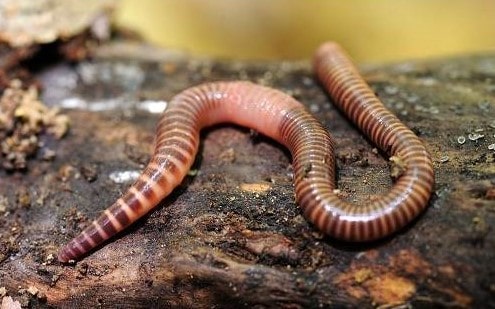
Only the girdle is often distinguished by its original flattening in the form of lateral outgrowths that are not close to each other. By color, it can be red, or pink with the addition of purple, purple, brown, and brown shades of lawn worms.
In size: from small specimens just over a millimeter wide and about 2.5 cm long to very large and thick. But all varieties are very interesting and useful for humans.
That is why it so happened that they have spread widely around the world and are being closely studied.
Some of them live in decay products or in manure; others in the soil, improving it in forests, orchards, orchards, and meadows. Eisenias has an interesting property – settling in an organic environment, they contribute to its effective and rapid decomposition.

That is why people specially breed these lawn worms in worm farms in order to obtain very valuable compost fertilizers in this way.
The starting material here can be manure, as well as anything else, for example, kitchen waste. Purely theoretically, having such lawn worms, every housewife is able to produce Biohumus on her own, unless, of course, she needs valuable fertilizers.
California Red Worm (Artificially bred from Lumbricus rubellus)
We have already met with reddish raincoats – a very useful European species, with a light hand of a man who moved to America. And there the story of these unpretentious babies had a continuation. In the middle of the last century, scientists from California noticed them, having decided to artificially improve them in the laboratory, and in the end, they achieved their goal.
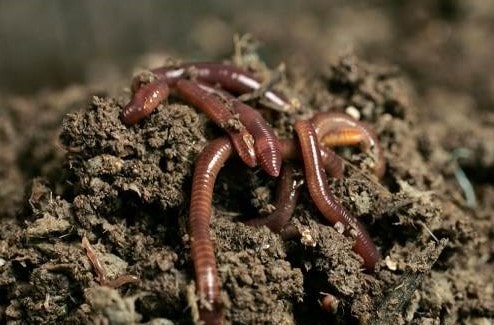
So a new species of red lawn worms appeared, only not European, but Californian – improved. They immediately became interested in farmers and scientists from all over the world.
Of the qualities by which these lawn worms surpass their progenitors, one should name efficient processing of all types of biological waste, for example, livestock compost and rot; the ability to take root in a huge mass of their relatives; as well as impressive fertility.
Here we add: resistance to bacteria and viruses; unpretentiousness; the absence of the habit of sprawling with a well-fed existence, which is also very important for domesticated species of worms.
In size, one lawn worm from an improved species does not exceed 6 cm and weighs no more than a gram. At the same time, such a baby processes exactly half of what is eaten per day into Biohumus.
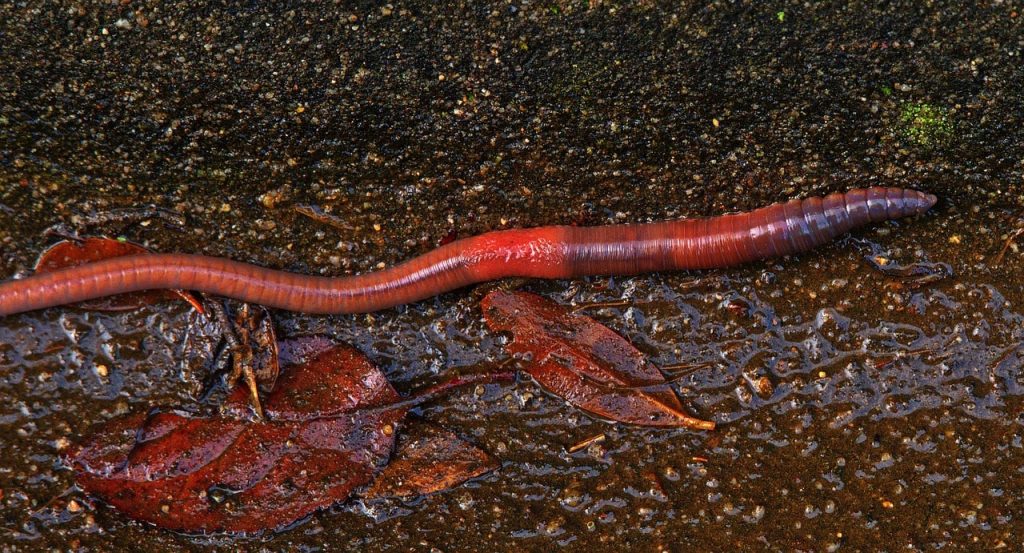
Considering that more than 50,000 individuals can safely coexist and actively produce valuable fertilizers on one square meter, these are shock indicators.
Like all their “wild” relatives, representatives of the artificial species breathe with the entire surface of the body. Without even any semblance of teeth, they absorb nutrients into themselves, exposing them to the action of gastric juices inside the body, thus digesting them.
That is, everything functions according to the normal scheme, even though the lawn worm belongs to the species, the creation of which not only nature but also man tried.
The red California worm is grown specifically for various agricultural purposes and fishing
Australian megascolides (Megascolides australis)
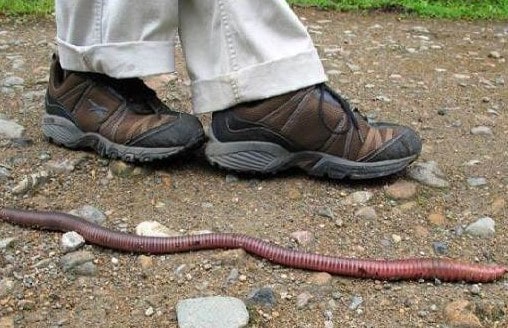
In the southeast of the distant mainland of Australia, there is the Gippsland region, through which the Bass River flows. On its banks, there is a plot of land with an area of about 400 m 2.
On this heel, with moist soil (and only on it) there is a special kind of endemic lawn worm, whose maximum length can reach 3 m.
You can not observe them too often, since these creatures rarely appear on the surface, they live in the bowels of the earth, where they dig tunnels and hide in burrows up to 2 m deep or more. But they can be detected by the special noise they make.
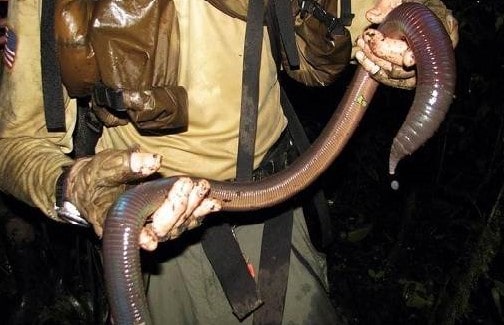
Giant lawn worms are sometimes grouped together so that a dozen individuals fit on one square meter.
They feed on dead organic matter and plant roots. For the world, representatives of the species are respectable centenarians.
It is not yet known exactly what their terms are. But only in an adult state they grow within 5 years, and in the cocoon stage, they develop for about a year.
Andiorrhinus
This is a whole genus of lawn worms from 37 species. Its representatives became famous in South America for being the creators of original landscapes, which were called “Surales”. Such hilly terrain from a bird’s eye view seems unusually beautiful.
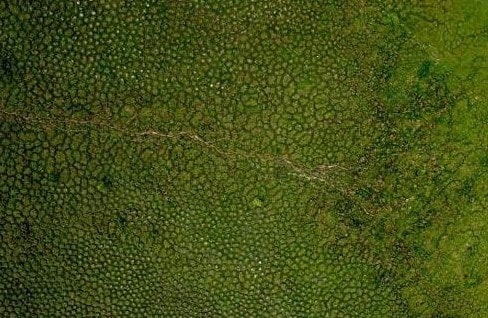
The picturesque green hills, separated from each other by deep winding channels, excited the imagination of people for a long time and became a mystery to them since the origin of marvelous beauty remained incomprehensible.
However, in the end, it became clear that meter-sized worms unwittingly turned out to be unique designers.
Huge piles, towering 2 m high and reaching 5 m in diameter, mostly consisted of their excrement. And the pits around them, as it turned out, were formed after the plentiful meals of the giants, in excess of absorbing local soil deposits.
It is believed that the landscape of Surales was created by huge lawn worms.
Hammerworm (Bipalium)
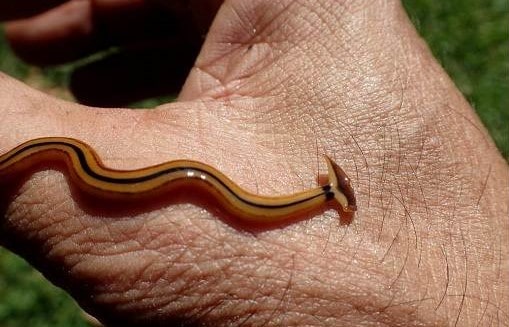
It turns out that there are predatory lawn worms, moreover, cannibals. They are physically strong, and their attacks can be dangerous for many representatives of the fauna (but not for humans, mainly for small invertebrates).
They strangle and poison their victims with mucus. True, scientists classify members of this genus as soil planarians.
That is, from the point of view of science, they are not lawn worms, quite the opposite – they feed on them and displace these useful creatures from their usual habitats. But, on the other hand, in the rainy season, hammers have a habit of crawling out of their earthen runaways, which means that such lawn worms can be classified as rainworms.
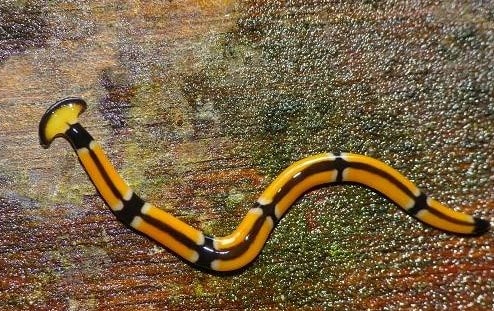
Such monsters of the underworld are potentially immortal. They reproduce not only asexually, but also by cloning.
They have a flat long body, the underside of which is a large solid “sole” and is adapted for movement; as well as a special head in the form of a hammer or a shovel.
The colors of the hammers are different: green, golden, and dark, and sometimes the general background is decorated with a pattern.
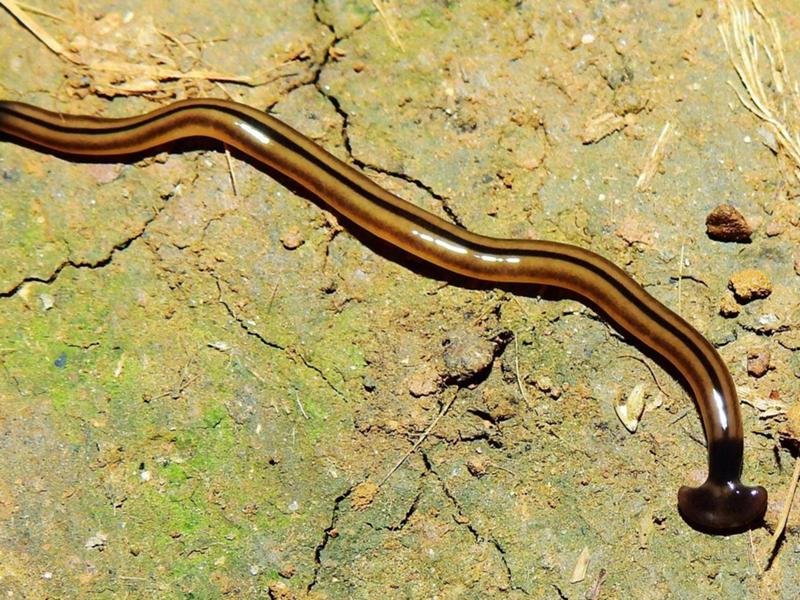
Such creatures are common in humid warm corners of the planet with soft soils, for example, there are many of them in the tropics of Asia.
There is information about the penetration into the territory of France, where the lawn worms were brought along with exotic plants.
Hammer lawn worm sizes may not be very large. However, there is evidence of encounters with specimens larger than three meters. They are most likely mutants.



